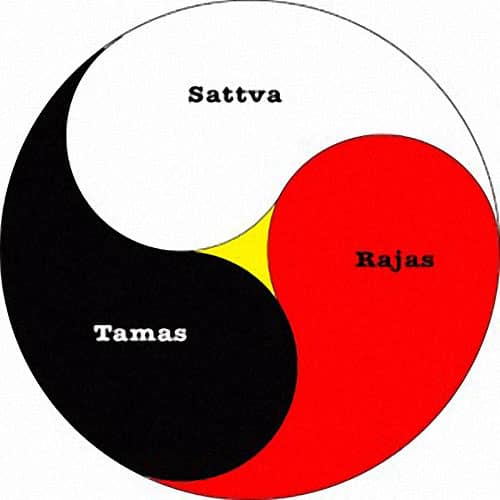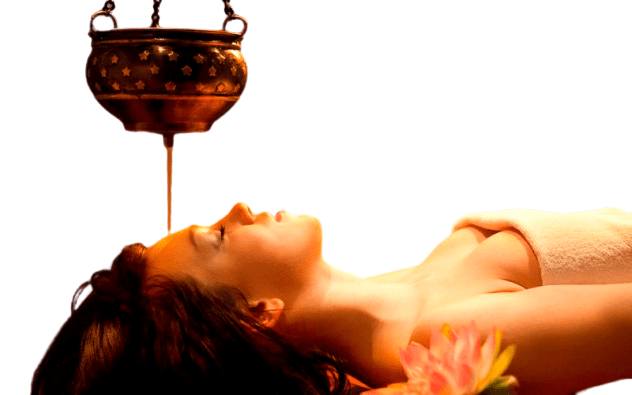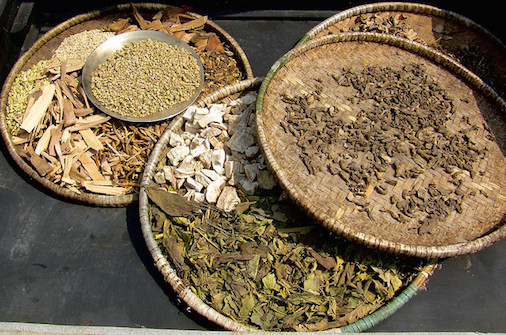
by Tirtha Acharya | Dec 18, 2020 | Ayurveda
The concept of trigunas | Sattva, Rajas, Tamas Guna
In the yogic philosophy, there is a common notion that almost everything that is composed of this universe is made up of some of the basic things called nature. Likewise, nature, which is also called Prakriti, has three major qualities, which pops out from things like energy, matter, and consciousness. In this article, we delve into the concept of trigunas ( sattva, Rajas and Tamas guna)
The quality of trigunas or energy can further be divided as Sattva (beingness and peace), rajas (activity and passion) whereas tamas (darkness and chaos). By simply manipulating the gunas helps you to plummet the stress, anxiety, agitation inside the mind, which is manifested in the body, and rise the inner power such as peace, love, harmony that leads you to the god-like character.
Ayurveda has lucidly explained the characteristics of people based on psychology (Manasa), constitution (Prakriti). However, the genetic factor plays an important role in determining the psychological characteristics of the human being. The manifestation of such is contingent on the dominance of one guna over another. It is common for an individual to have a mix of trigunas in their life. Nevertheless, the gunas, which is predominant, determine the character that gets manifested in the surrounding.
A healthy state of mind is achieved by maintaining the harmonic relationship with the different gunas. If there is any disharmony in the state of mind then it is obvious that the person will suffer from some sort of anomaly be it a physical health disorder or the mental disorder.
Sattva Guna – The highest quality of trigunas
In the yogic realm, sattva is considered the highest quality of trigunas, which however is not easy to attain. One needs to practice a lot to attain the sattva. In the state of sattva, one is utterly in harmony, peace, joy, and intelligence. The individual who has attained Sattva’s character is also free from any sort of physical as well as mental misbalance. The seasoned yogis mostly attain it. Nonetheless, karma yogis also attain the state, but it is nothing but tough to preserve the state for a longer period as they are swayed by the action they have to perform the whole day.
Some of the Sattva characters that a person has are a delight, compassion to others, joy, fulfillment, cheerfulness, dauntlessness, harmony with nature, blissful, empathy, self-denial, focus state of mind, selfless service to the humankind, etc.
Rajas Guna
The Sanskrit meaning of Rajas is king. Among the concept of the gunas, it is regarded as the most active gunas among trigunas and is characterized by motion and stimulation. One with the Rajas characteristics are much ambitious, is vacillating from one thought to another, are sometimes lazy, but not all the time. Have a mixed feeling of euphoria, stress, anxiety, worry, restlessness, stressed, fearful, ruminating over bad thoughts, and past thoughts. The person with a rajas character gets attracted to the physical entity, they pine for a better future and get attached to the materialistic things.
Tamas characteristic which bogs the people down
Among all three trigunas, Tamas is the baneful characteristic a person holds. It is usually characterized by the heaviness that bogs the people down. Tamas’s characteristics produce various maladies in person that include laziness, apathy to the stimulus, lethargy. Tamas erupts from the ignorance to the knowledge and that sways the person away from the spiritual path. Some of the peculiar tamasic characteristics are helpless, doubt, guilt, boredom, addiction, dependency, and ignorant of the truth.
Tamas dosas arise due to the unbalance in life, unnecessary stress that springs up from the negative thoughts of lust, attachment, fear, anger, malice, and anxiety. However, all the dosas can be placated by practicing yoga and meditation on a regular basis.

by Tirtha Acharya | Aug 11, 2020 | Ayurveda
Shirodhara
Ayurveda treatment procedure of Shirodhara is one of the most widely used therapy for the management of mental stress. Etymologically, Shirodhara is made up of two Sanskrit words shiro meaning head and dhara meaning continuous flow of stream.
So, practically it is a therapeutic process of pouring warm medicated oil in a continuous flow of stream from a certain height on the forehead of the recipient for clinically specified period of time.
From the perspective of Ayurveda, mental diseases are in close relation with Vata, one of the fundamental doshic component of the body. Vitiation of Vata is considered to be the primary cause for origination of any kind of mental disorder.
Vata is considered to be alleviated by oleation therapies as the qualities possessed by oil and vata contradict to each other. So shirodhara in Ayurveda has been practiced under oleation therapy for a long time with the purpose of pacifying aggravated vata responsible for causing mental illnesses.
When to have it?
Shirodhara has been indicated classically in diseases showing symptoms similar to that of anxiety disorders, mental exhaustion, epilepsy, depression, phobia, insomnia, chronic headaches and other neurobehavioral disorders.
Other than these, shirodhara can be recommended for general relaxation purpose too. It can be added as an additional therapy in meditation practice to achieve quick results in increasing awareness and attention.
Contra-indications of shirodhara
There are few cases in which shiro-dhara cannot be recommended which are as follows:
- Fever
- Nausea and vomiting
- Skin diseases in the region of head and scalp
- Alcohol intoxication
- Recent neck injuries
In high grades of anxiety, the patient must be counselled properly and then only therapy should be given.
How is Shirodhara given?
The recipient is made to lie on the Shirodhara table on his/her back. Gentle oil massage is given on the head or if required on whole body. The medicated oil is warmed alongside. The vessel from which continuous flow of is to be poured is positioned just above to the recipient’s forehead.
The vessel has a hole at the center through which the oil leaks out. A cotton plug is placed in the hole to control the flow of the oil. Ideally, the distance between the recipient’s head and the hole of the vessel is about 4 angulas (four fingers).
When medicated oil is warmed up to appropriate temperature, it is poured in the vessel. Cotton gauge are placed over the closed eyes of the recipient to prevent the entry of oil into the eyes. The cotton plug is opened and continuous stream flow of oil is made to fall upon the forehead.
Oscillatory motion is provided to the vessel such that the flow could cover whole area of the forehead. A minimum duration of half an hour is recommended for an effective therapy.
After the completion of procedure, recipient is made to sit comfortably on the table and oil on the head is cleared properly. Then s/he is asked to take warm water bath after half an hour.
How does it works?
Scientific studies on shirodhara in Ayurveda have concluded on a common hypothesis for the working mechanism of this therapy. Oil poured on the forehead produces mechanical stress waves and induce neurological signals through stimulation of tactile and thermo-receptors.
It is also speculated that some areas of frontal lobe and limbic system are also activated due to this therapy. Both of these phenomena provoke the release of endorphins and serotonin. At the same time constant soothing pressure of forehead is going to lower the sympathetic tone.
Ultimately the effects that are seen and which have been documented by the scientific studies are as follows:
- Decreased heart rate
- Reduced blood pressure
- Lowered respiratory rate
- Anxiolytic effect
- Decreased level of noradrenaline in blood
Benefits of shirodhara
- Shirodhara induces the release the positive neurotransmitters like endorphins and serotonin as well as reduce the secretion of stress hormone noradrenaline. So, it is the best and safest non-invasive procedure for tranquilizing your mental stress and improving generalized anxiety disorder.
- Studies have shown that a daily course of Shirodhara continuously for 21 days is effective in providing relief from sleeplessness, improving sleep quality and normalizing sleep time.
- Since the effects of decreased heart rate and reduced blood pressure are seen from shirodhara, it is quite beneficial in cases of hypertension.
- Discomforts related to head region like chronic headache, migraines, tinnitus, heaviness of head are also better relieved by shirodhara.
- Attention deficit, lack of concentration and memory loss is also improved.
- Women in their ages nearing menopause experience wide range of psycho-somatic symptoms clinically termed as peri-menopause syndrome. Shirodhara can provide better relief from psychic symptoms in such cases.
- In men, stress is also accountable for causing premature ejaculation. One of the by prouct benefits of stress management through shirodhara is also applicable in cases of premature ejaculation.
- Oil used in shirodhara nourishes hair and scalp region so helps in preventing premature hair loss and graying
- A state of relaxation is generated by shirodhara therapy which assists in harmonizing body, senses, mind and soul.

by Tirtha Acharya | Aug 11, 2020 | Ayurveda
Best Ayurveda School In Nepal
Nepal Yoga Home, a renowned yoga and Ayurveda school, offers a reason for you to visit and experience Ayurveda in Kathmandu, Nepal. Since the Vedic times Nepal has been the hub of spiritual, mental, and physical well being through the combined application of Ayurveda and Yoga. NYH is running separate Ayurveda department with different services of Ayurveda. Here we discuss why NYH is counted as best Ayurveda school in Nepal.
Divinely figures of Yoga – Patanjali, Vyasa – actually practiced and flourished this art of physical, mental and spiritual healing among the hills and mountains of the Himalayas. So, Nepal is a place where the spirit finds its courage to explore the unexplored, to experience something new – to experience Ayurveda.
Nepal Yoga Home in addition to best yoga classes, it is best Ayurveda school in Nepal that for the last decade has provided the best in Yoga and Ayurveda. Through crescendo and decrescendo of our teachings and your experience, we have resonated well with those who seek spiritual guidance. And as such today we will be presenting why you should join Ayurveda retreat at Nepal Yoga Home.

1. Expert Doctors Team
Our team of doctor is the best of the bunch. Besides their gruel some studies they go through extensive training at Nepal Yoga Home to cater to your needs based on your dosha. Such that diagnoses are never missed, care is at its optimum, and you get the best out of your few weeks of experience at Nepal Yoga Home.
Our doctors are specialized in every field of Ayurveda, whether it is detoxifying panchakarma, or healing herbal medicine, or revitalizing Vajikarana or Rasayana. We provide consultations based on your specific needs. As such Nepal Yoga Home is well above the rest to cater to your specific Ayurveda needs. That’s why it is the best Ayurveda school in Nepal.
2. Experienced therapist
Next reason, why Nepal Yoga Home is the best yoga school in Nepal is our experienced Ayurveda therapist. The magic of Ayurveda lies in the hands of the performer. And as such a poorly done Ayurvedic massage can result in exacerbation of symptoms, instead of resolution of it.
Keeping this motto in mind we at Nepal Yoga Home provide you with some of the best Ayurvedic massage and treatment in town, with some of the most experienced therapists in the town. We believe in the capacity of touch to heal and we at Nepal Yoga Home are driven as such.
3. Optimal location and homestay
Nepal Yoga Home lies at the heart of the king of Hills (Nagarjuna). As such it is a place that is serene, secluded, and seductive. However, it is only 20 minutes drive from the heart of Kathmandu (Thamel). Gone are the days when Ayurveda and Yoga were to be done hidden in a jungle hidden from human contact, it is to be done at modern facilitated yet off-limits place like Nepal Yoga Home, and it sure as heck is going to be a once in a lifetime experience.
Also, the homestay at Nepal Yoga Home is a thing of a marvel. People always praise our love for clean Ayurvedic food enhanced with spices from Himalaya, our hospitality, and our can-do attitude for the guests. Such that in matters of hospitality and health no stone is left unturned.
4. Home Away From Home
Nepal Yoga Home has served as a hub for odd wayfarers, disjoint wanderers, and tiered travelers. It provides a homely and a hospitable place for you to satisfy your needs of mind, body, and spirit. Ayurveda was meant to serve as a great unifier of these three aspects of life. Nepal Yoga Home serves as a beacon to fulfill this purpose. So people come seeking Yoga Home as best Ayurveda school in Nepal.
5. Yoga and Meditation
Besides Ayurveda, at Nepal Yoga Home, you get to experience Yoga and Meditation at its authentic self. Our yoga teachers have experience of more than ten years of catering to specific needs. Also, Nepal Yoga Home is only such school in Nepal that delves into the integration of Yoga and Ayurveda. It create an environment for the mind, body, and soul to function at their optimal level. So calm your mind with an Aummmmm and join Nepal Yoga Home today to experience the healing effect of Yoga and Ayurveda combined. It is top yoga shcool in Nepal for certified yoga teacher training.
6. Ayurveda’s detailed course makes it the best Ayurveda school in Nepal
What is Ayurveda? How to integrate Ayurveda in daily life? How can Ayurveda help you to attain physical and mental well-being? To find the answer to all these questions come and have a chat with our doctor at Nepal Yoga Home. The first talk with our doctor is free. Get all your questions answered and more on anything and everything related to Ayurveda.
We at Nepal Yoga Home serve authentic Ayurveda along with Ayurveda retreat, Ayurveda training, and Ayurveda therapies. So whether it is to loosen your tight hamstring, or to relax your mind, or to activate your chakra using Vedic techniques we at Nepal Yoga Home are ready to offer our help in best possible way.
7. Ayurvedic herbs
Next factor why Nepal Yoga Home is best Ayurveda school in Nepal is we collect ayurvedic herbs for the treatment of patients and students. Ancient texts describe that the Himalayas harbors the best herbal medicine in the world – these are the herbs that harbors the most therapeutic potential.
Similarly, the ghee that is obtained from the cows of the Himalayas is best because they eat the herbs growing in the nooks and crannies of the hills and mountains. Nepal Yoga Home-keeping this in mind brings its line of Ayurvedic herbal composition, oils, and balms. These are herbs selected by specialized Ayurvedic doctors and prepared through rigorous Ayurvedic protocols. As such these will give you the most authentic Ayurvedic experience anywhere in the world.
8. One with nature makes it best Ayurveda School in Nepal
Nepal Yoga Home lies at just 20 minutes drive from the heart of Kathmandu. NYH is at the base of Nagarjuna – the king of the hills. It is enamored with herbs, trees, and shrubs which were classically described in Ayurveda. Surrounding is one with nature and has served as a guiding light for all of Ayurveda and Yoga.

by Nepal Yoga Home | Jul 11, 2019 | Yoga, Ayurveda, Health
Shatavari literally means a woman with 100 husbands. This indicates towards the strong hormonal and reproductive system of the woman making her able, fit and full of vitality. The plant is also called Shatamuli representing multiple roots in a bunch. Shatavari, Latin named Asparagus racemosus is called Asparagus in English. Various species of Asparagus has been used as a general tonic and as an aphrodisiac especially by women since long. Here, we will be discussing the health benefits of Asparagus from Ayurveda viewpoint.
Health Benefits Of Shatavari(Asparagus)
Plant Description
Asparagus racemosus, belonging to the Liliaceae family, is a thorny climber with smooth triangular branches. Tiny long, straight or curved thorns are seen and the leaves are a clade. The inflorescence of this plant is 1 to 2 inches long, white, single or bunched and with creamy white flowers. Tiny globose fruits become red after they ripe. The roots are creamy or whitish in color, many in number and are fleshy. These are distributed in up to 4000 feet altitude and are widely cultivated in Nepal and India.
Energetics of Shatavari
- Rasa (Taste): Sweet, bitter
- Guna (Quality): Heaviness, unctuous
- Virya (Potency): Cold
- Vipaka (Rasa essence): Sweet
- Dosha: Pacifies Vata and Pitta
- Chemical Constitution: steroidal saponins- sarsaponin, protodioscin, diosgenin
- Vitamins A, B, C, E, folic acid, amino acid asparagine, arginine
Actions And Therapeutic Uses Of Shatavari
- When applied externally, it has dosha pacifying and tissues strengthening effects. The oil-cooked with Shatavari, when applied locally, helps in headaches, Vata disorders, neurological problems, weaknesses and skin diseases.
- It is also a tonic to our brain, strengthens the nervous system and also has pain relieving effects.
- Due to its pitta pacifying property and its nature to stimulate biliary flow, it is used in hyperacidity, irritable bowel syndrome, hemorrhoids, and ulcers in the mucosa of GIT.
- Shatavari is good for the heart and helps reduce blood pressure, thus used in heart diseases, hypertension, and epistaxis.
- Woman’s support at its best – It can be the best tonic for pregnant women, those undergoing problems with their menstruation and specially before, during as well as after menopause, as it helps to balance the hormonal changes and deficiency, females go through in those stages of life. It helps nourish the fetus inside the womb and also promotes the formation of milk in the mother’s breast. This is why powder of Shatavari roots has been distributed for free by the government Ayurveda hospitals of Nepal in each district to the pregnant for the better health of mother and child.
- It also has diuretic properties, thus used in oliguria and difficulty in micturition.
- Rasayana – Shatavari promotes good health, vigor, vitality, and longevity. It has anti-oxidants in it, thus renders anti-aging effects keeping us younger.
The roots of this species of Asparagus are used, 10-20 ml if the extracted juice is taken, 3-6 grams of powder and 50-100ml if the decoction is to be taken.
In a nutshell, despite all the health benefits of Shatavari, it is used as a general tonic by both sexes and specially females. Like Withania serves as a rejuvenating tonic in male, Shatavari is specialized in improving female health in all ages. It is, therefore, woman’s support at its best and ultimately the Queen of Herbs.

by Nepal Yoga Home | Jul 8, 2019 | Yoga, Ayurveda
Ayurveda is an art of how we live. It is a lifestyle, truly a way of living. It explains every do’s and don’ts in our day to day life, in the form of Dinacharya, Ritucharya, Dharaniya vega, and Adharaniya vega and even more. Human beings have of the body with a machine-like pattern, where different mechanisms are being conducted every time. As a by-product of such mechanisms, various urges come to existence, which if suppressed can cause harmful effects on our body and may even lead to diseases.
Adharaniya derives from Sanskrit word ‘dharana’ which means to hold and the prefix ‘a’ means not to. ‘Vega’ translates to urges. Therefore, the urges of our body which we shan’t hold are simply known as Adharaniya vega.
13 Urges (Adharaniya Vega) Of Acharya Charaka
- Urge for urination
- Urge for defecation
- Urge for seminal discharge
- Urge for flatus
- Urge for vomiting
- Urge for sternutation or sneezing
- Urge for eructation
- Urge for pandiculation or yawning
- Urge for hunger
- Urge for thirst
- Urge for lacrimation
- Urge for sleep
- Urge for deep breathing after exercise
Now, let us discuss the probable effect of suppression of a few urges that we often suppress as well as their management.
Types Of Adharaniya Vega And Its Management
1. Urge of Urination:
Suppression of this urge leads to pain in the pelvic region, the urethra and difficulty in urination. It might also lead to headache and pain in groins. We can manage this by oleation, massage and steaming, intake of ghee before meal and sleep and Vasti therapies.
2. Urge of Defecation:
Most of us might have this habit of suppressing our urge of defecation when we are at work or outside. If yes, we must have experienced pain in our lower abdomen, the fullness of abdomen, pain, and heaviness in upper thighs. Some might also have experienced faeces and flatus arrested inside following the suppression. To get rid of these, suppository, massage and steaming, Vata pacifying food and herbs are advised.
3. Urge For Seminal Discharge:
The reproductive juices are considered the most vital of all 7 tissues and its urge is not meant to be suppressed as per the Ayurveda classics. If suppressed, it leads to scrotal and penile pain, tiredness of body, pain in cardiac region, obstruction of urine and seminal vesical calculi. Massaging the local area, immersing the area into medicated decoction or oil, intake of alcohol, chicken meat, milk, Niruha vasti, and sexual intercourse are measures to manage the problems.
4. Urge For Flatus:
Due to hesitation or shame, people often suppress flatus, especially when in the crowd. But this can lead to obstruction of the same, urine and faeces, gaseous distension and pain in the abdomen. These problems can be managed by applying oil, steam and suppositories, Vata pacifying food, medicines, and vasti therapy.
5. Urge For Vomiting:
Controlling the vomiting urge can lead to itching in the skin, eruptions and other skin problems, loss of appetite, fever, anemia, and swelling like problems. Though each of these problems may need to be addressed separately, emesis after food intake, medicated smoke, fasting or light foods intake, bloodletting, exercise, and virechana are said to manage them in general.
6. Urge For Sleep:
Suppression of urge for sleep may lead to yawning, fatigue, body pain, headache, heaviness in eyes. These can be managed by a good oil massage to head and sleep.
7. Urge For Hunger:
Not eating when hungry can result in emaciated body, weakness, uneven skin tone, and complexion, pain in body parts, anorexia and dizziness which can be possibly managed by taking warm, light and unctuous food.

by Tirtha Acharya | Feb 8, 2019 | Ayurveda, Yoga
The meaning of yoga is to unify the body, mind, and soul to discover a balanced, harmonious and happy life where there is no sickness and bondage. So yoga fundamentally concentrates for a healthy body. Ayurveda is a sister science of yoga as both of them has the same origin i.e. Vedas.
Yoga and Ayurveda have healing effects on the body, which is their primary function. Unless the body is healthy, one cannot enjoy the real happiness and real meaning of life. First of all Yoga and Ayurveda makes your body healthy and then they lead towards a higher goal.
Healing Effects of Yoga
The limbs of yoga like Asana, pranayama, mudra, bandha, detoxification etc. all are directly connected to healing the body. Regular practice of Asana improves flexibility, balance, and strength as well as cures many ailments. The pranayama or breathing techniques gives positive effects on depression, asthma, pain, memory power, etc.
Yoga, with the proper connection of aerobic exercise, meditation, and ayurvedic diet help cardiovascular disease, blood pressure and overall systems of human beings. Yoga helps to cope in a better way with daily demands and sound sleep.
There are various researches that yoga acts as anti-aging effects promotes immunity and has healing effects for various physical and mental diseases. Some of them are as follows:
· Blood Sugar
· Blood Pressure
· Heart Diseases
· Stress
· Depression
· Cancer
· Menopause
“Psychology Today” gives the report,-“Yoga has the antagonistic consequence to suffering or pain on the brain than chronic pain.” Yoga Therapy slackens nervous system tension, chronic pain, headaches and migraines, chronic fatigue, disc problems, carpal tunnel, neck pain, glandular disorder, and many others.
There are many Western Medical institutes that have done researches and studies on health effects of yoga and Ayurveda. Timothy McCall, MD has prepared a summary of various professional medical studies named “38 Ways Yoga Keeps You Fit” which proves Yoga is the best way to cure multiple diseases like cholesterol, back pain, depression, blood pressure and circulation, abdominal diseases and much, much more.
National Geography by Ohio State University reported on a study that “Cancer patients who practiced yoga for treatment were comparatively better than those who didn’t. The rate of Inflammation controlled was much better due to the effects of yoga.
Yoga is not merely physical but has a direct relation with mind creating balance in emotions and thoughts and uplifting consciousness. In fact, more than 90% of the diseases start in the mind and affect the physical body. Yoga practice eliminates the root of suffering and leaves no place to remain diseases.
Healing Effects of Ayurveda
Yoga applies yogic techniques to heal the diseases and provide the best health while Ayurveda uses different types of plants and herbs for healing the diseases and giving the ultimate natural health since they both have the same origin and similar goal.
One of the verses from the Yoga Sutra, “yogas chitta vritti nirodhaha”, betells yoga as the harmoniously settled state of the mind and thoughts which is the perfect state of mental health. There is a verse in ayurvedic texts, svasmin dishati iti svasthah, which means that one who perennially abides coalesced with the Self is a healthy person. These verses reveal that both yoga and Ayurveda focus on the perfect health- physically, mentally and spiritually.
We can understand that Ayurveda and health have healing effects in many ways. There are other many verses in the ayurvedic texts which focus to this self-mentioned state of the mind as the essence of health. A verse from the Sushruta Samhita states, “A person is said to be a healthy person whose doshas are in balance, whose appetite is fine, whose dhatus are working properly, whose malas are harmonized and whose Self, mind and senses remain full of bliss.
Unity of Mind, Body, and Consciousness
Yoga, a Sanskrit word, means “unification” or “to connect together”. It is the yoking together to unite body, mind, and soul. Yoga makes the mind stronger by joining the mind with the Self, the Atma. The mind cannot be properly connected with the self if there are diseases or defilements in the body and mind. So, primarily yoga must have healing effects in the body.
The aim of Maharishi Ayurveda is also to experience this unity making the body healthy. The word ayurveda is a Sanskrit word which is derived from “ayu” which means “life” or “lifespan.” Therefore Ayurveda is “the science and process of life and longevity.” Another meaning of ‘ayu’ is described in Charaka Samhita (an ancient ayurvedic text)
— sharirendriya sattvatma sanyogo. . . ayu. The verse states ayu as the integrated state of body, mind, sense, and soul. Thus both yoga and Ayurveda have common goal i.e. complete unification body, mind, and consciousness. To get the unity, the fundamental element is perfect health. Thus, basically, yoga and Ayurveda works for healing.
Yoga is the complement of Ayurveda for healing
Yoga is an inseparable part of Ayurveda. It is mentioned in ayurvedic texts like the Charaka Samhita. Since Ayurveda has healing effects, nowadays many ayurvedic hospitals are opened. Yoga is always in Ayurvedic hospitals for better healing effects. Yoga asana is important for dissolving physical stress, healing the body and calming the mind before meditation and focus at healthy lifestyle (dinacharya) the ayurvedic routine.
Yoga is the ideal ayurvedic exercise, because it enhances immunity power, rejuvenates the body, improves circulation and digestion, removes stress and in this way it heals the body.
Yoga has healing effects which balance all three doshas of an individual. Different yoga poses have different healing effects. For instance, forward bending poses cool Pitta Dosha. Twisting yoga asanas are good for Kapha because they promote digestion. Backward bending poses are warming and heating which balances Vata Dosha.
Yoga is always referred to as long as an individual has the strength to practice it. Yoga asanas tone all the parts of the body and purify the internal organs of toxins, which is one of the aims of Ayurveda.
Ayurveda is the complement of Yoga for healing
Yoga practitioners can get benefits from the ayurvedic activities along with yoga. For example, abhyanga (ayurvedic massage) removes toxins from the body, reenergizes the body and relaxes the muscles for yoga practice. Maharishi Ayurveda gives wide support for the better practice of yoga.
There must be a strong foundation of ayurvedic knowledge or hatha yoga runs the risk of becoming mere physical exercise. Yoga aims to purify the nadis (channels) with different postures. But for the cleansing process, only yoga is not sufficient. Ayurvedic principles have vital importance for removing ama (digestive impurities). So it is always recommended ayurvedic principles with yoga asanas by traditional yoga schools as they are too much interdependent to each other.
Along with this, the yoga practitioner needs to understand the way of detoxifying through lifestyle and dietary which will stop the accumulation of toxin in the body rather it keeps cleansing. With this purification, yoga, and Ayurveda give healing effects together.







